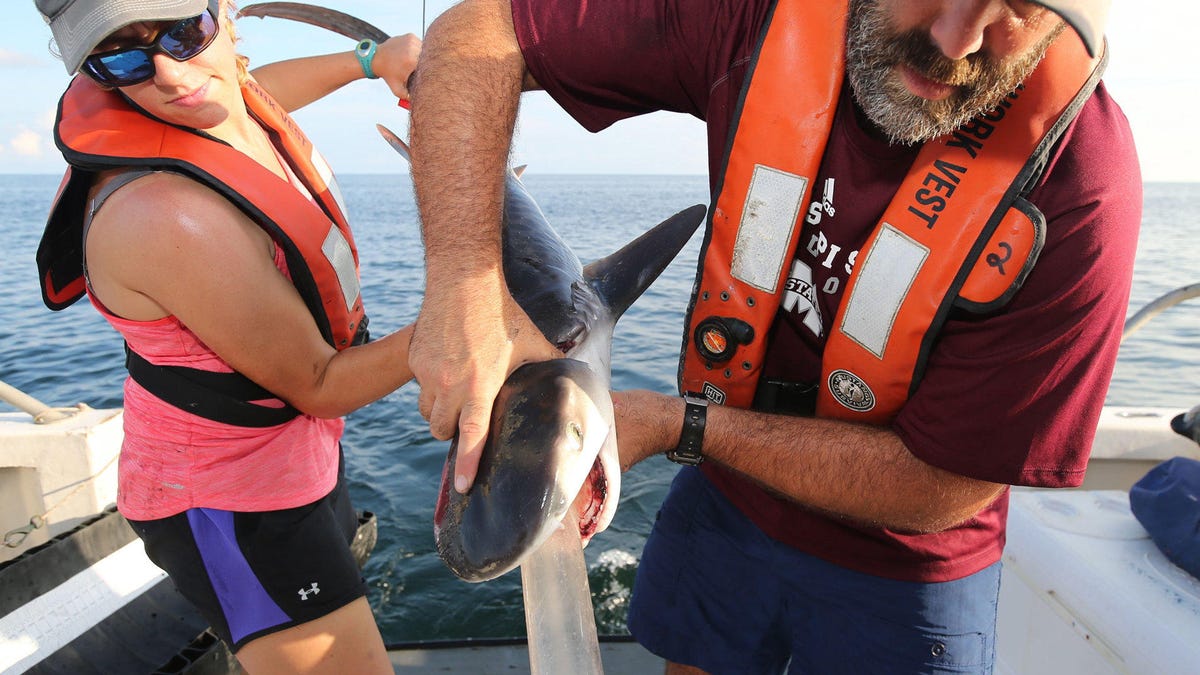Surprised scientists find baby sharks are eating your favorite birds
Weirdly, young tiger sharks like to snack on doves and sparrows. Doo doo doo doo doo doo.

And this, kids, is how you collect the contents of a tiger shark's stomach.
Woodpeckers, sparrows and doves, oh my. The remains of these land-loving birds have all appeared in an unlikely place: the stomachs of baby tiger sharks. DNA analysis of "shark barf" shows the young sea predators have some unexpected dining options.
"Tiger sharks will see an easy meal and snatch it up, but I was surprised to learn that the sharks were eating songbirds -- I assumed that they'd be seabirds," said study co-author Kevin Feldheim with the Field Museum in Chicago.
These songbird feathers came out of a shark's tummy.
Scientists from Mississippi State University and the Field Museum led a study on baby tiger shark eating habits published this week in the journal Ecology.
The museum refers to tiger sharks as "the garbage cans of the sea." They've been known to eat everything from albatrosses to rubber tires.
So how do you collect the barf of baby tiger sharks? You get some researchers together, go to the Gulf of Mexico, catch sharks, pump their stomachs and then let them go free, a little hungrier than they were before.
Out of 105 sharks studied, the scientists discovered 41 had partially digested bird bits in their stomachs. They sent the feathery remains to the Field Museum for DNA analysis. There were no seabirds to be found, just songbirds.
Baby tiger sharks aren't going to turn down an easy snack.
"The tiger sharks scavenge on songbirds that have trouble flying over the ocean. During migration, they're already worn out, and then they get tired or fall into the ocean during a storm," said Feldheim.
The scientists hope a better understanding of shark food sources could help when formulating plans to protect the predators. A late 2018 paper highlighted a substantial decline in certain shark populations, part of a worrying global trend.
Originally published 11:01 .m. PT.

